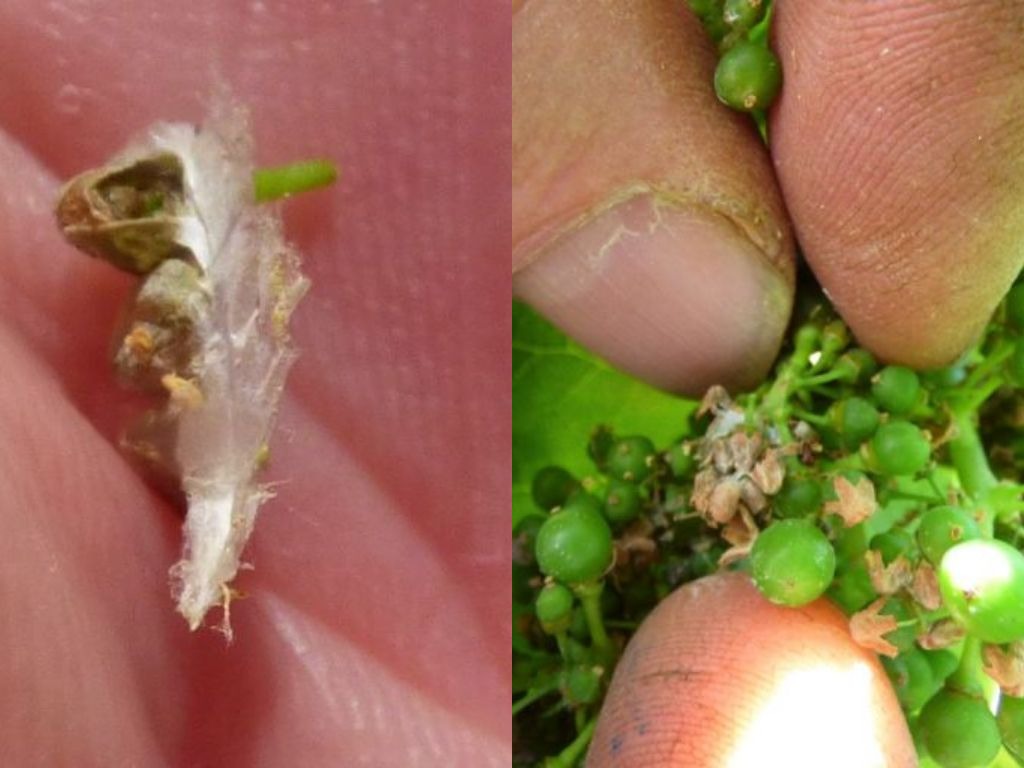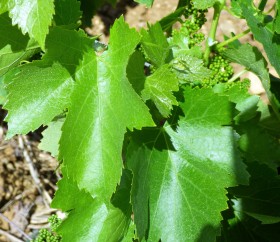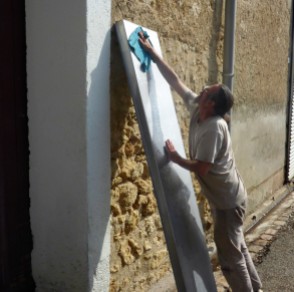The rather gloomy nature of my last post might have made you think that we’re all doomed and no good wine will emerge from the Coutelou vats this year. Of course, that is not the case, there are still 50% of the grapes and Jeff can conjure up magical wines from just about any grape juice. So, let’s be positive and report on what is happening here with the 2021 vendanges.
Jeff has assembled a big team of assistants, as he told me it’s rather ironic that should be the case in this vintage. Firstly there’s Matteo, from Rome, who has been in Puimisson with Jeff since January. He helped to prune the vines this year, together with Englishman Matt who I sadly did not get to meet. Matteo, therefore, knows the vines and vineyards well and leads the team equallly well. Steeve is a friend who has visited Jeff many times and done harvest before with us. From the Jura region, Steeve has decided to change career and is spending the next few months with Jeff to learn more about his new vocation. Gilles, an ebullient and cheerful local man, has been working with Jeff for some time, happy amongst the vines after having his own vineyards for many years. Louis is from Narbonne, did harvest here last year and has returned. He is hard working, cheerful and speaks excellent English. Boris is another local who comes every year to help with vendanges, a lovely guy who works with nature conservation in his full time job.
We are also fortunate to have Jeff’s sister Catherine helping with picking and looking after us as well as her daughter Flora Rey. You will have seen photos from this talented artist on my blog before as shse has been recording the story of the vines and domaine through her photography and film. I urge you to have a look at this film which Flora put together showing the harvesting of Sainte Suzanne Syrah with music composed by Catherine. Consider subscribing to the Youtube site Vins et Spiritueux Coutelou for more great videos about events in Puimisson.
As I mentioned previously the first stage of the vendanges was to focus on Syrah, most affected by frost. Sainte Suzanne, the young vines of Segrairals and my beloved Syrah from La Garrigue were picked on August 30th and 31st. One third of the normal yield and quite concentrated, Jeff will have to consider how to use it in blending.
I joined the team on September 1st appropriately in Rome vineyard, my favourite. We collected the Cinsault, Grenaches of three colours and some Muscat before heading to the last few bunches of the La Garrigue Syrah and then on to the complanation of 20+ grape varieties, known now as Flower Power, more correctly as Font D’Oulette. That the few of us picked those three vineyards in one morning is not good news. In the afternoon the Moroccan team went to Segrairals and collected some of the Cinsault grapes of the younger vines. These were full and generous and will add much needed bulk to the grapes from the morning. The Cinsault filled the tank though much of that is pulp and the quantity will fall as the juice emerges.
On September 2nd Jeff wanted some fresh white grapes to make into the PetNat (sparkling), Bobonade. Muscat, Macabeu and Grenache Gris from Peilhan were in good condition and then we moved to the new plantation at the bottom of Sainte Suzanne. These were newly planted when I saw them last but they have grown quickly. The young vines managed to twist themselves round the wires of the trellising so it wasn’t the easiest to pick but the Clairette and Macabeu were fresh and acidic, just what is needed for sparkling wine. They were sent direct to press.
And that brought the first act to a close. Pressing followed the next couple of days but picking resumed on Tuesday September 7th. So, until shortly after then, there will be an intermission.


















































































































































